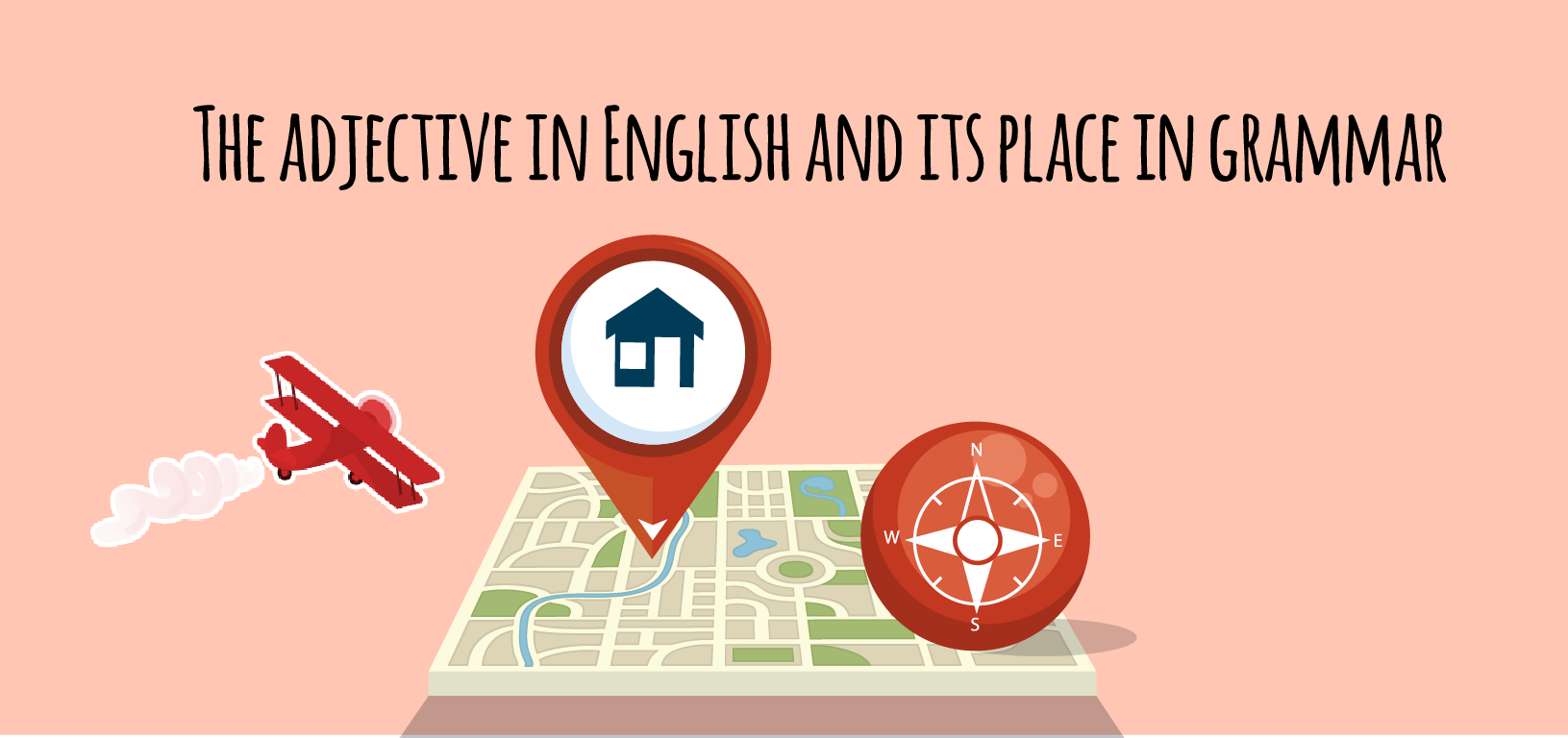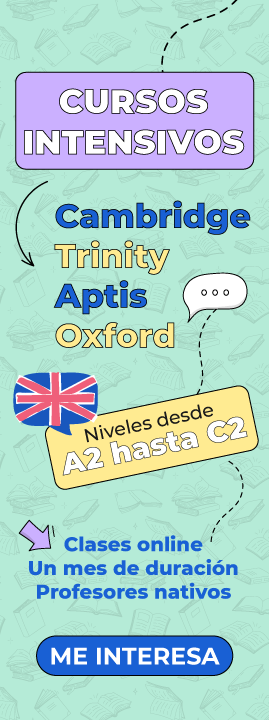The adjective in English and its place in grammar

The adjective in English and its place in grammar
ÍNDICE DE CONTENIDOS
Today we are going to talk about the adjective in English, especially for those who want to start studying the English language in order to guide them in their studies. Well, specifically, an adjective is a word used to describe or qualify a person, place or thing. An adjective modifies nouns or pronouns. Without adjectives, we wouldn’t know if you had a quiet day or a hectic day. Let’s dive into the complexities of this important part of speech so that you can identify an adjective when you see it.
What is an adjective?
When it comes to function, adjectives are gatherers of information . Specifically, they provide us with information about the size, shape, age, color, origin or material of an object. Here are some examples of adjectives in action:
- He is a giant man. (Size) / Es un hombre gigante. (Talla)
- He is a fat man. (shape) / Es un hombre gordo. (forma)
- He is an older man. (years) / Es un hombre mayor. (años)
- He is a black man. (colour) / Es un hombre negro. (color)
- He is a Mexican man. (origin). / Es un hombre mejicano. (origen).
- He is a heavy man. (opinion) / Es un hombre pesado. (opinión)
- He is a fussy man (observation)/ Es un hombre quisquilloso (observación)
Adjectives answer questions
Adjectives have another important role: they answer questions like “Which one?” “How many?” and “What kind?” See how they do this work in the following examples:
- What neighbor did you see? It was the third b / ¿Qué vecina viste? Fue la del tercero b.
- What kind of fabric did you buy? I bought velvet. / ¿Qué tipo de tela compraste? Compré de terciopelo.
- How many people were there at the party? There were few people. / ¿Cuánto público había en el partido? Había pocas gentes.
- How many people like ice cream? Most people like ice cream. / ¿A cuántas personas les gusta el helado? A la mayoría de la gente le gusta el helado.
- Which pen did you use? I used the red pen. / ¿Qué bolígrafo utilizaste? Usé el bolígrafo rojo.
Adjectives use certain suffixes
A suffix is the final part of a word. They often follow familiar patterns . In general, many adjectives in English end with these suffixes:
- able / -ible: adorable, invisible, responsible, awkward / able / -ible: adorable, invisible, responsable, incómodo
- al: educational, gradual, illegal, nocturnal, viral / al: educativo, gradual, ilegal, nocturno, viral
- an: American, Mexican, urban / an: estadounidense, mexicano, urbano
- ar: cellular, popular, spectacular, vulgar / ar: celular, popular, espectacular, vulgar
- ent: smart, powerful, silent, violent / ent: inteligente, potente, silencioso, violento
- ful: harmful, powerful, tasteful, thoughtful / ful: dañino, poderoso, de buen gusto, reflexivo
- ic / -ical: athletic, energetic, magical, scientific / ic / -ical: atlético, enérgico, mágico, científico
- ine: bovine, canine, equine, female, male / ine: bovino, canino, equino, femenino, masculino
- il: agile, docile, fertile, virile / il: ágil, dócil, fértil, viril
- ive: informative, native, talkative / ive: informativo, nativo, hablador
- less: neglected, endless, homeless, timeless / less: descuidado, interminable, sin hogar, atemporal
- ous: cautious, dangerous, huge, smelly / ous: cauteloso, peligroso, enorme, maloliente
Place of adjectives
What if you come across a word that doesn’t have one of the suffixes above, but you still suspect that it is an adjective? You can use the location of the sentences as a clue .
For example, some adjectives end in -y, -ary, or -ate (or any other suffix for that matter). These words can be nouns, adverbs, verbs, or adjectives. The key to knowing if a word is an adjective is to look at where it is and what it does in the sentence.
Before a noun
If it comes immediately before a noun, it is probably an adjective. For example, in blue plate “plato azul”, blue “azul” is an adjective that describes the noun plate “plato”.
Between an article and a noun
If it is found between an article such as “the”, “an” or “a” and is followed by a noun , it is almost certainly an adjective. For example, in “the field of grass”, “grass” is the adjective that describes the noun “field.”
Between a possessive and a noun
If it comes between a possessive pronoun or noun and another noun , it is almost definitely an adjective. For example, in “his red kite”, “red” is an adjective to describe “kite”. The same is true for “Sam’s red kite”.
Between a demonstrative and a noun
If a word comes between a demonstrative like “this”, “that”, “these” or “those” and a noun , it is probably an adjective. For example, in “that immaculate kitchen”, “immaculate” is an adjective that describes “kitchen.”
Between a quantity and a noun
If a word falls between a number, including “some,” “most,” “all,” or “a few,” and a noun , it is often an adjective. For example, in the phrase “a few ordinary days”, “ordinary” is an adjective that describes “days.”
Adjectives as complements
Adjectives can also act as complements . Complements complete a sentence when the verb is “to be”. Not every complement is an adjective, but some adjectives can be complements. For example:
- She is tall / Ella es alta.
- She is smart, handsome and rich. / Es inteligente, guapo y rico.
- This store smells bad. / Esta tienda huele mal.
The order of adjectives
When using adjectives in writing, the order that is very important must be taken into account , when several adjectives are related in a row there is a specific order that must be respected. English people naturally tend to put them in the correct order, but for an English learner to be correct at first they must memorize the order.
And this is all about adjectives in English, furthermore, and if you want to know about upcoming calls with which to obtain your official title, here we leave you the number 1 platform.



